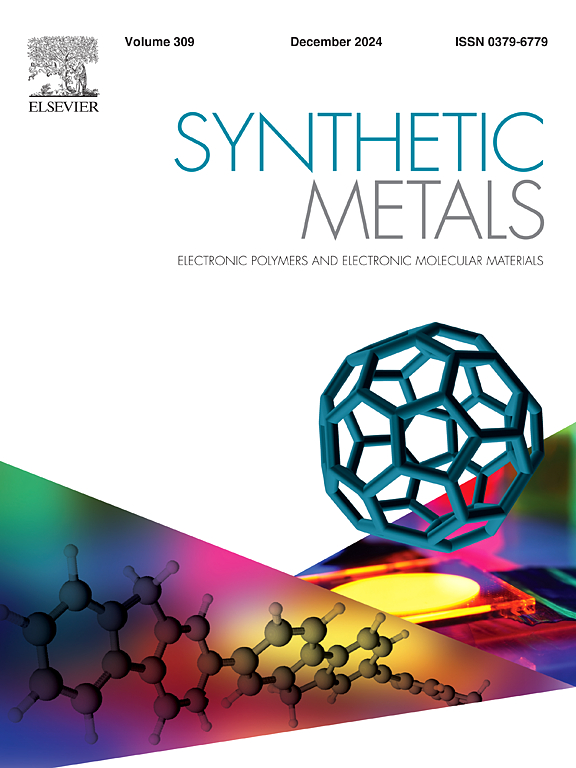比色分析:利用掺银石墨氮化碳进行尿酸检测
IF 4
3区 材料科学
Q2 MATERIALS SCIENCE, MULTIDISCIPLINARY
引用次数: 0
摘要
尿酸是关节炎、痛风、白血病等疾病的重要诊断指标。准确的定量是有效诊断、监测和管理各种病理条件的关键。在此,我们报道了二维银掺杂石墨氮化碳(Ag@g-C3N4)作为尿酸非酶比色传感平台的合成和表征。通过各种光谱技术证实了该合成。傅里叶变换红外光谱(FTIR)显示了石墨氮化碳(g-C3N4)和Ag@g-C3N4纳米复合材料的特征峰,而扫描电子显微镜(SEM)显示了材料的纳米多孔形态。能量色散x射线(EDX)和元素映射分别证实了各种组成元素的存在和均匀分布。以3,3 ',5,5 ' -四甲基联苯胺(TMB)为指示材料,将合成的纳米复合材料作为一种新的尿酸比色传感平台。该传感平台对尿酸的检测灵敏度高(LOD为0.12 µM),线性范围宽(1 ~ 81 µM), R2 = 0.998,选择性好。该传感器在纳米复合材料浓度为4 mg, pH为6,TMB为15 mM, H2O2为20 mM时工作最佳,响应时间为150 秒。此外,该传感器成功地检测了真实尿液样品溶液中的尿酸,具有良好的灵敏度和选择性。本文章由计算机程序翻译,如有差异,请以英文原文为准。
Colorimetric insights: Harnessing silver-doped graphitic carbon nitride for uric acid detection
Uric acid serves as a vital diagnostic marker for various diseases like arthritis, gout, leukemia, etc. Accurate quantification is critical for effective diagnosis, monitoring, and management of various pathological conditions. Herein, we report the synthesis and characterization of two-dimensional silver-doped graphitic carbon nitride (Ag@g-C3N4) as a non-enzymatic colorimetric sensing platform for uric acid. The synthesis was confirmed through various spectroscopic techniques. Fourier-transform infrared spectroscopy (FTIR) showed the characteristic peaks for graphitic carbon nitride (g-C3N4) and Ag@g-C3N4 nanocomposite, whereas scanning electron microscopy (SEM) displayed the nanoporous morphology of the material. Energy-dispersive X-ray (EDX) and elemental mapping confirmed the presence of various constituent elements and their homogenous distribution respectively. The as-synthesized nanocomposite was used as a new colorimetric sensing platform for uric acid sensing employing 3,3′,5,5′-tetramethylbenzidine (TMB) as an indicating material. This fabricated sensing platform detected uric acid with excellent sensitivity (LOD, 0.12 µM), a wide linear range (1–81 µM) with R2 = 0.998, and good selectivity. The proposed sensor worked best at 4 mg of the nanocomposite, pH 6, TMB 15 mM, and 20 mM of H2O2, with a response time of 150 seconds. Furthermore, the proposed sensor successfully detected uric acid in real urine sample solutions with good sensitivity and selectivity.
求助全文
通过发布文献求助,成功后即可免费获取论文全文。
去求助
来源期刊

Synthetic Metals
工程技术-材料科学:综合
CiteScore
8.30
自引率
4.50%
发文量
189
审稿时长
33 days
期刊介绍:
This journal is an international medium for the rapid publication of original research papers, short communications and subject reviews dealing with research on and applications of electronic polymers and electronic molecular materials including novel carbon architectures. These functional materials have the properties of metals, semiconductors or magnets and are distinguishable from elemental and alloy/binary metals, semiconductors and magnets.
 求助内容:
求助内容: 应助结果提醒方式:
应助结果提醒方式:


